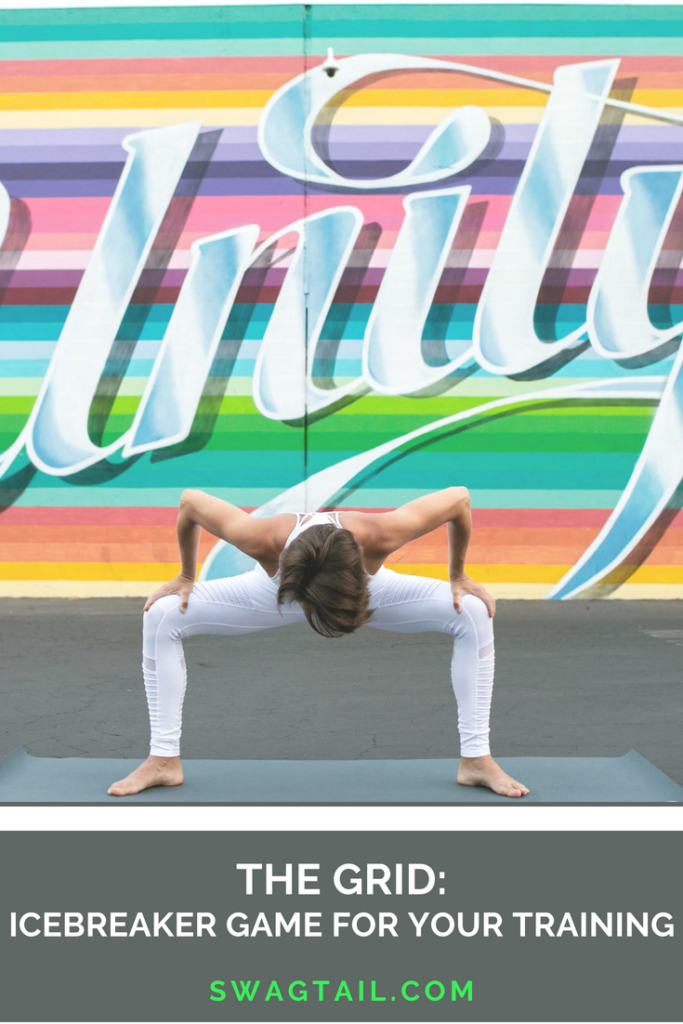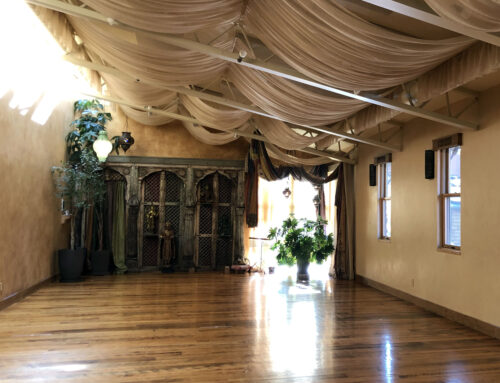 A creative and fun introductory icebreaker game is one of the best ways to create an inclusive environment at your teacher training. It relaxes people from the get-go. It brings laughter and interaction to the group immediately and can relieve any nervous tension about meeting new people.
A creative and fun introductory icebreaker game is one of the best ways to create an inclusive environment at your teacher training. It relaxes people from the get-go. It brings laughter and interaction to the group immediately and can relieve any nervous tension about meeting new people.
The Grid Game also starts to incorporate learning on so many levels. It addresses visual learners because you see each new person of you. This up-close interaction, in conjunction with seeing their name written on your paper, increases name retention. You also hear their name, and a bit about them, which supports auditory learners. You also incorporate the kinesthetic sense throughout the game because you are standing, moving, shaking hands, and using your body language to meet and greet others.
This icebreaker is fantastic for group sizes of 10-25 people. You can modify it slightly for smaller or larger groups, as we’ll note below.
PREPARATION
There will be a small amount of prep work needed to prepare for this icebreaker. Please have the application of your students on hand when formatting this game.
- Use the grid template below.
- Fill in some of the grid spots with unique pieces of information of the participants. This could include where they are from, what their hobbies include, or what their current profession is.
- Consider keeping some general squares to make the game a bit easier. These statements could be “My favorite color is blue,” or “I have a dog at home.”
- Once the squares are completed, print a sheet for each participant in the training. I suggest printing a few extra to have in case additional people join, or someone needs a new sheet.
GAME INSTRUCTIONS
When you bring your group together for the first day of training, this game can be incorporated before or after introducing some of the basic training logistics. Pass out the grid game sheet of paper, one to each participant. Then read the instructions below:
Step 1:
The goal of this game is to fill up each of your grids with a name from someone else in this training. The first person to have their grid completed will win a small prize (should you choose to include one).
Step 2:
Find a partner in the room, and introduce yourself. Say your name, make eye contact, and shake their hand.
Step 3:
Look down at your sheet of paper and select a statement from one of the grids that you think applies to them. Turn the phrase into a question, and pose it to them. For example, if the statement says “I play soccer,” ask them “do you play soccer?”
Step 4:
Get their response. If their response is “no,” then ask them another question. You can ask them up to three questions total.
Step 5:
When they answer “yes” to a question, fill their name out in the grid. Ask them how to correctly spell their first and last name. If you asked three questions and they did not answer “yes” to a single one, you can have them tell you something unique about them and fill in a square on the grid accordingly. Keep in mind that even though you might answer “yes” to more than one of the questions on the grid, each name can only appear once on the entire page.
Step 6:
After you and your partner have both had a chance to ask a question, say goodbye to your partner by name. This reinforces you saying it and hearing it, which makes remembering it easier in the future.
Step 7:
Move about the room and find a new partner. Then repeat steps 2-6 until each square on the grid is filled in.
PUTTING IT TOGETHER
Start your training off in a fun and comfortable manner by using this grid icebreaker game with your group. If you have a smaller group, you can allow someone’s name to fill in two grids. For a group size over twenty five, you could actually create two grids to ensure each person met face to face for at least a few minutes. No matter the group, this is sure to be a way to raise the energy of your training and get the group off to a cohesive start.








Leave A Comment